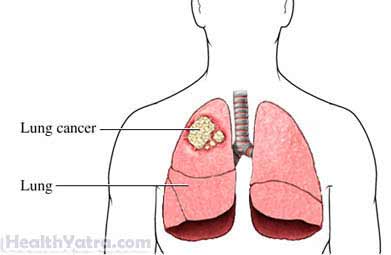Definition
Each lung is made up of 2 or 3 sections called lobes. A lobectomy is the surgical removal of one of these sections from the lung.
Reasons for Procedure
A lobectomy is used to treat a variety of lung conditions, such as
- Lung cancer
- Congenital defects
- Cysts
- Tuberculosis
- Fungal infections
- Abscesses
- Lobar emphysema

Possible Complications
If you are planning to have a lobectomy, your doctor will review a list of possible complications. These may include:
- Infection
- Bleeding
- Anesthesia-related problems
- Collapsed lung
- Need for prolonged artificial respiration on a ventilator
- Damage to nearby organs or structures
- Chronic pain related to the surgery
- Death
Factors that may increase the risk of complications include:
- Smoking
- Increased age
- Obesity
- Smoking
- Diabetes
- Excessive alcohol intake
What to Expect
Prior to Procedure
- Your doctor may do the following:
- Physical exam
- Blood and urine tests
- Chest x-ray
- Pulmonary function test
- Ultrasound
- CT scan
- MRI scan
- Talk to your doctor about your medicines. You may be asked to stop taking some medicines up to one week before the procedure, like:
- Aspirin or other anti-inflammatory drugs
- Blood thinners
- Follow a special diet if instructed.
- Eat a light meal the night before. Do not eat or drink anything after midnight.
- Take antibiotics or other medicines as directed.
- You may be asked to shower the night before the procedure with a special soap.
- Arrange to have someone drive you to and from the procedure. Arrange for help at home as you recover.
Anesthesia
General anesthesia will be given. You will be asleep. A tube will be placed in your windpipe to help you breathe.
Description of Procedure
A lobectomy may be done in one of two ways:
- Traditional thoracotomy—A large incision will be made. The ribs will be spread. The doctor will locate and remove the lung lobe.
- Video-assisted thoracic procedure—Several small incisions will be made between your ribs. A tiny camera and special tools will be inserted through the incisions. Your doctor will be able to see the inside of your chest on a nearby monitor. The lung lobe will be located and removed.
If you are having a lobectomy to remove cancer, the doctor will also remove lymph glands in your chest. The glands will be tested for any sign of cancer.
After completing the procedure, your doctor will place tubes in your chest. They will help drain the chest cavity. The incision(s) will be closed with stitches or staples.
Immediately After Procedure
You will be taken to a recovery room. You will be given fluids and medicines through an IV.
How Long Will It Take?
The procedure takes about 1-4 hours.
How Much Will It Hurt?
You may feel some pain as the anesthesia wears off, but pain can be managed with medicines.
Average Hospital Stay
- Thoracotomy—about 1-2 weeks
- Video-assisted thoracic procedure—2-5 days
Post-procedure Care
At the Hospital
You will be asked to cough and walk often. You may be given an incentive spirometer. This is a breathing exercise device that will encourage you to take deep breaths.
At Home
Be sure to follow your doctor’s instructions, which may include:
- You will likely be told to walk daily.
- Limit lifting during the first few days after your surgery.
- Follow directions to take care of your incision.
- Ask your doctor about when it is safe to shower, bathe, or soak in water.
- You will be given medicine to help manage pain.
Call Your Doctor
After you leave the hospital, call your doctor if any of the following occurs:
- Signs of infection, including fever and chills
- Redness, swelling, increasing pain, excessive bleeding, or any discharge from the incision site
- Nausea and/or vomiting that you cannot control with the medicines you were given after surgery, or which last for more than two days after you leave the hospital
- Pain that you cannot control with the medicines you have been given
- Pain, burning, urgency or frequency of urination, or persistent blood in the urine
- Cough, shortness of breath, or chest pain
- Coughing up yellow, green, or bloody mucus
- Pain and/or swelling in your feet, calves, or legs
Call for medical help or go to the emergency room right away if any of the following occurs:
- Sudden chest pain
- Sudden shortness of breath
If you think you have an emergency, call for medical help right away.
